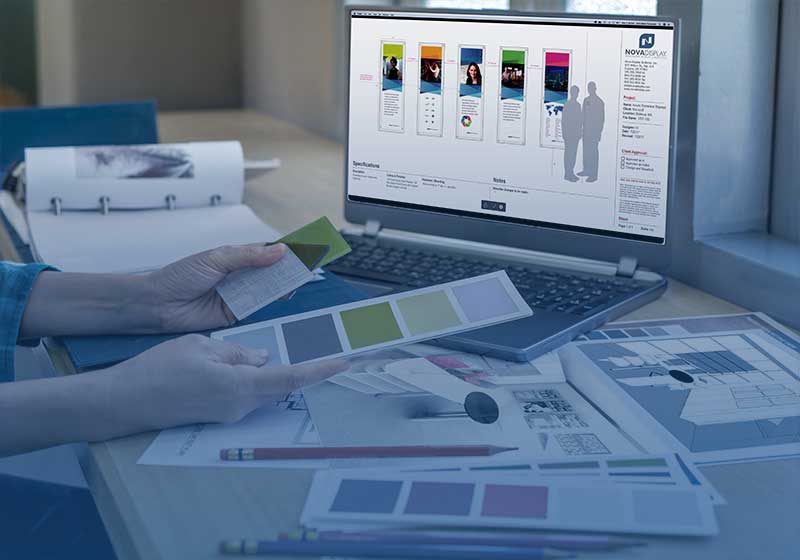Home ❯ Resources ❯ Customer Support Pages ❯ Submit Artwork and Project Specifications ❯ Artwork Submission Guidelines ❯ Submission Guidelines — Laser Cutting and Engraving
Submission Guidelines — Laser Cutting and Engraving
The following section outlines some of the factors to consider when preparing your files for laser cutting or engraving — for applications such as decorative paneling, sign blanks, sign letters, or custom laser cut shapes. Artwork for laser cutting must be provided in vector format only. Please ensure that any fonts or strokes used have been outlined.
File Format
- PDF, AI, and EPS file created with Adobe Creative Suite Software.
- CDR file created with CorelDRAW Software.
- DXF, DWG files compatible with TurboCAD, or AutoCAD version 2014 or earlier.
File Setup
Vector Cutting — Laser cutting lines must be created in a vector format and be set at the minimum thickness possible, for example in CorelDRAW the lines should be set to “hairlines”; in TurboCAD the lines should be set to 0; in Adobe Illustrator software the line thickness should be set to 0.001 pt.
Text Cutting — Convert all text fonts to line art by converting text to curves (by creating poly-lines or breaking apart text to lines in other drawing programs).
Vector Engraving — If more than one engraved depth is required per layout, mark each line with different RGB colors. Group lines by color and indicate the approximate engraving depths for each color.
Raster Engraving — Make sure that the engraved areas in your file do not have a thin black outline around them (otherwise the laser will recognize it as a cutting line). The depth of the engraving is specified by the gray-scale color of the pixel (black gets engraved the deepest, gray is engraved to medium depth, and white is left un-engraved). Please specify if front or back (mirrored) engraving is required.
Engraving Depths — Raster and vector laser engraving cannot create relief features or deep grooves with precise depths. For that purpose you will need to use a CNC router. Raster and vector engraving are best for making light imprints with a sandblasting effect.
Cutting and Engraving — There is no need to split the cutting and engraving among different files. We can laser cut and engrave from the same file simultaneously.
Small Details
The laser cut parts should be no smaller than the material thickness, otherwise the cut-out pieces may be very fragile and will warp and break easily.
Double Lines
Change all double lines in your artwork to a single cutting line, otherwise the line will be cut twice, damaging the part finished edge.
Laser Beam
The laser kerf (thickness of the laser beam) is about 0.002″ to 0.01″. The laser beam runs along the center and takes off about 0.001″- 0.005″ of material from either side of the lines. Please take this into account If you require accuracy and precision.
Cutting Size
We cut items from acrylic sheet material in sizes up to 51 x 100 inch. Recommended cutting depth (thickness) without loosing the edge quality is up to 1/2” thick. For correct scaling and size reference draw a one-inch square in each of your layout.
Material
We specialize in laser cutting acrylic. We offer a variety of acrylic sheet material to choose from such as clear, non-glare, color, frosted, satin-ice light-diffusing, textured, UV filtering, or impact resistant acrylic. Other specialized acrylic product such as marker–board, mirror-coated, reflective, edge-lit or back-lit are also available.








